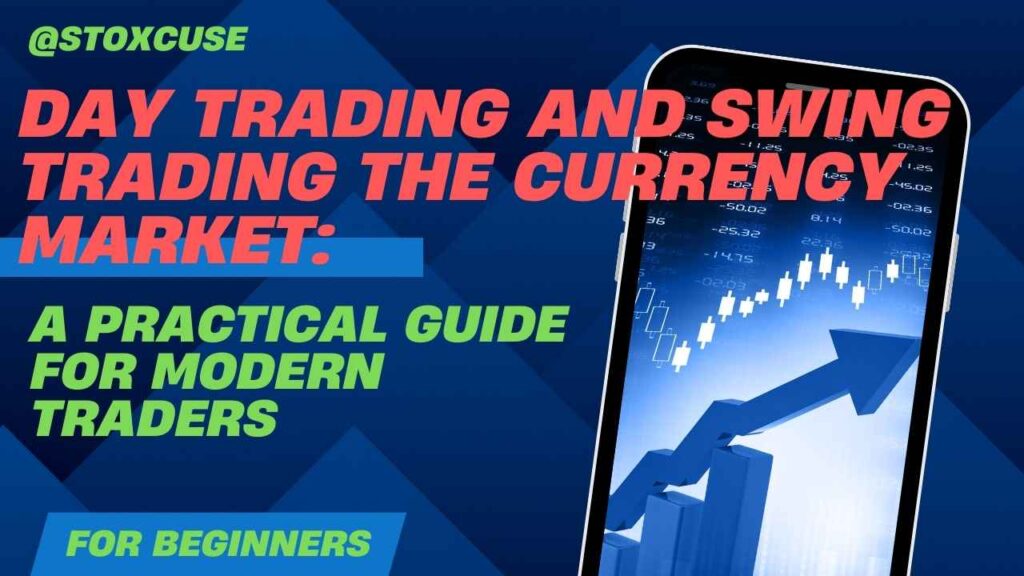The foreign exchange market, or Forex, is the largest and most liquid market in the world, with a daily trading volume exceeding $7 trillion. For traders looking to take advantage of this massive liquidity, short-term strategies such as day trading and swing trading offer flexible and potentially lucrative opportunities. While both styles aim to capitalize on price movements, they differ significantly in their approach, time commitment, and risk profile. This article provides an in-depth look into both strategies to help you decide which one aligns best with your goals, resources, and personality.

What is Day Trading in Forex?
Day trading involves buying and selling currency pairs within the same trading day. This means that all positions are closed before the market closes or before the trader logs off for the day. The primary goal is to profit from small, short-term price movements.
Key Characteristics:
- No overnight positions: Trades are opened and closed on the same day.
- Short timeframes: Trades can last from a few minutes to several hours.
- High frequency: Traders often execute multiple trades per day.
Tools and Techniques Used:
- Technical analysis is the primary decision-making tool, often using indicators like:
- RSI (Relative Strength Index)
- MACD (Moving Average Convergence Divergence)
- VWAP (Volume Weighted Average Price)
- Price action and candlestick patterns are also crucial.
- Economic calendar for high-impact news events that can cause volatility (check out Forex Factory Economic Calendar).
Pros of Day Trading:
- No overnight risk: You’re not exposed to overnight news or gaps.
- Multiple trading opportunities: Many setups throughout the day.
- High potential returns: Fast compounding through frequent wins.
Cons of Day Trading:
- High stress: Constant monitoring and fast decision-making required.
- Time intensive: Demands full-day attention and quick reflexes.
- High transaction costs: Due to frequent trading, spreads and commissions add up.
What is Swing Trading in Forex?
Swing trading is a medium-term strategy where traders hold positions for several days to weeks. The goal is to capture a chunk of a trend, whether it’s bullish or bearish.
Key Characteristics:
- Longer holding periods: Trades span several days or even weeks.
- Fewer trades: Typically 1–5 trades per week.
- Trend-following: Based on larger price patterns and macroeconomic themes.
Tools and Techniques Used:
- Technical analysis, with emphasis on:
- Trend lines and channels
- Moving averages (e.g., 50-day and 200-day)
- Fibonacci retracements
- Fundamental analysis also plays a role:
- Central bank policies
- Economic indicators (GDP, inflation, employment)
- Geopolitical events (follow updates on Reuters Forex News)
Pros of Swing Trading:
- Less time-intensive: Ideal for people with full-time jobs.
- Lower stress: Less screen time and more time to analyze.
- Better risk-to-reward ratios: Targeting bigger moves.
Cons of Swing Trading:
- Overnight and weekend risk: Subject to gaps and news events.
- Requires patience: Trades can take time to play out.
- Capital tie-up: Funds are locked in trades for longer periods.
Key Differences Between Day and Swing Trading
| Aspect | Day Trading | Swing Trading |
|---|---|---|
| Timeframe | Minutes to hours | Days to weeks |
| Holding Period | Intraday | Multi-day |
| Risk Exposure | No overnight exposure | Subject to overnight/weekend risk |
| Trade Frequency | High | Moderate |
| Leverage Use | Often high | Moderate |
| Required Attention | Full-time monitoring | Part-time |
| Stress Level | High | Moderate |
| Capital Efficiency | High turnover, fast recycling | Longer capital lock-in |
Choosing the Right Trading Style
Selecting between day and swing trading isn’t just about potential profits—it’s about aligning the strategy with your lifestyle, psychology, and resources.
Ask Yourself:
- Time: Do I have the time to monitor markets throughout the day?
- Personality: Do I thrive under pressure or prefer a more methodical pace?
- Capital: Can I withstand multiple trades per day, or do I prefer lower-frequency setups?
- Patience and Discipline: Am I impulsive or disciplined with entries and exits?
Practical Tips:
- Start with demo trading to test both strategies using platforms like MetaTrader 5.
- Keep a trading journal to track emotional and financial performance.
- Use risk management rules regardless of strategy (e.g., max 1–2% risk per trade).
Essential Tools and Platforms
Both day and swing traders rely heavily on technology. The right tools can make a significant difference in execution and analysis.
Brokers:
- ECN brokers (like IC Markets and Pepperstone) offer tight spreads and fast execution.
- Regulated platforms with strong reputations ensure fund safety.
Charting and Analysis Software:
- MetaTrader 4/5 (MT4/MT5): Widely used, customizable.
- TradingView: Browser-based with powerful charting and social sharing (visit TradingView).
- NinjaTrader: Excellent for strategy backtesting and automation.
News and Data Sources:
- ForexFactory: For real-time economic news (see calendar).
- DailyFX: For market analysis and trading tips (visit DailyFX).
- Bloomberg/Reuters: For broader economic and geopolitical context (Bloomberg Markets).
Advanced Tips for Both Styles
Whether you choose day or swing trading, success requires continuous improvement. Here are strategies to boost your performance:
Risk Management:
- Stop-loss orders are non-negotiable.
- Use position sizing calculators to maintain consistency.
- Follow the 2% rule: Never risk more than 2% of your account on a single trade.
Strategy Development:
- Backtest your strategy on historical data.
- Use forward testing in a demo environment.
- Stick to a few currency pairs to specialize and understand behavior.
Emotional Control:
- Avoid revenge trading after losses.
- Take breaks to prevent burnout.
- Review trades weekly and reflect honestly.
Final Thoughts
Day trading and swing trading both offer compelling opportunities for traders in the currency market. The best strategy is not necessarily the most profitable on paper—but the one you can execute consistently, confidently, and with emotional control. Understanding your own personality, availability, and risk tolerance is crucial in choosing your path.
Whether you’re aiming for the quick scalps of a day trader or the trend-riding patience of a swing trader, success in Forex demands discipline, education, and adaptation. As always, start small, trade smart, and keep learning.
Key Takeaways:
- Day trading involves rapid, intraday decisions with no overnight exposure.
- Swing trading focuses on multi-day trends and requires patience and analysis.
- The best style depends on your time, capital, risk tolerance, and personality.
- Mastering tools, risk management, and emotional control is essential for both.
Want to explore strategies used by professional algorithmic traders? Check out our other articles on quantitative trading methods and Forex algorithm development on QuantTrader.



